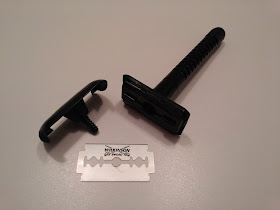It is the current fashion to sport a day or more of beard growth. Young persons today might scratch their heads puzzling out the exact meaning of the old athlete's quote:
If you are younger with a dark, fuller beard, it is considered attractive (sexy) in some circles to be clean but unshaven.
However, if you are a bit more experienced (that is, older) and have gray in your beard, that gray stubble just makes you look old, tired, and... well, somewhat like a down-on-his-luck guy. In other words, it isn't the look of success for an older man.
The good news for us more mature gents is that this gives us another excuse to go through the daily ritual.
Happy shaving!
** This winning-like-shaving quote is commonly attributed to Jack Kemp, the late senator and former professional football player. Though he undoubtedly said it, Kemp likely borrowed it from an athlete of an earlier generation. Not long ago on the internet, a web page cited the original source of this quote, and he was a baseball pitcher from the 1940s or there about, as I recall. I can't find the reference anymore, but here are some thoughts as to why this makes sense to have been uttered by a baseball player in the 1940s or early 1950s:
"Winning is like shaving: you do it every day, or you wind up looking like a bum." ** [Updated reference, below]
If you are younger with a dark, fuller beard, it is considered attractive (sexy) in some circles to be clean but unshaven.
However, if you are a bit more experienced (that is, older) and have gray in your beard, that gray stubble just makes you look old, tired, and... well, somewhat like a down-on-his-luck guy. In other words, it isn't the look of success for an older man.
The good news for us more mature gents is that this gives us another excuse to go through the daily ritual.
Happy shaving!
** This winning-like-shaving quote is commonly attributed to Jack Kemp, the late senator and former professional football player. Though he undoubtedly said it, Kemp likely borrowed it from an athlete of an earlier generation. Not long ago on the internet, a web page cited the original source of this quote, and he was a baseball pitcher from the 1940s or there about, as I recall. I can't find the reference anymore, but here are some thoughts as to why this makes sense to have been uttered by a baseball player in the 1940s or early 1950s:
- It was common to refer to athletes who didn't perform to standards -- especially baseball players -- as bums. Take, for example, the Brooklyn Dodgers, who were affectionately referred to by many of their fans as "dem bums."
- Baseball, with its long season, is played nearly every day. In football you don't win every day; you try to win once a week for a shorter season.




























